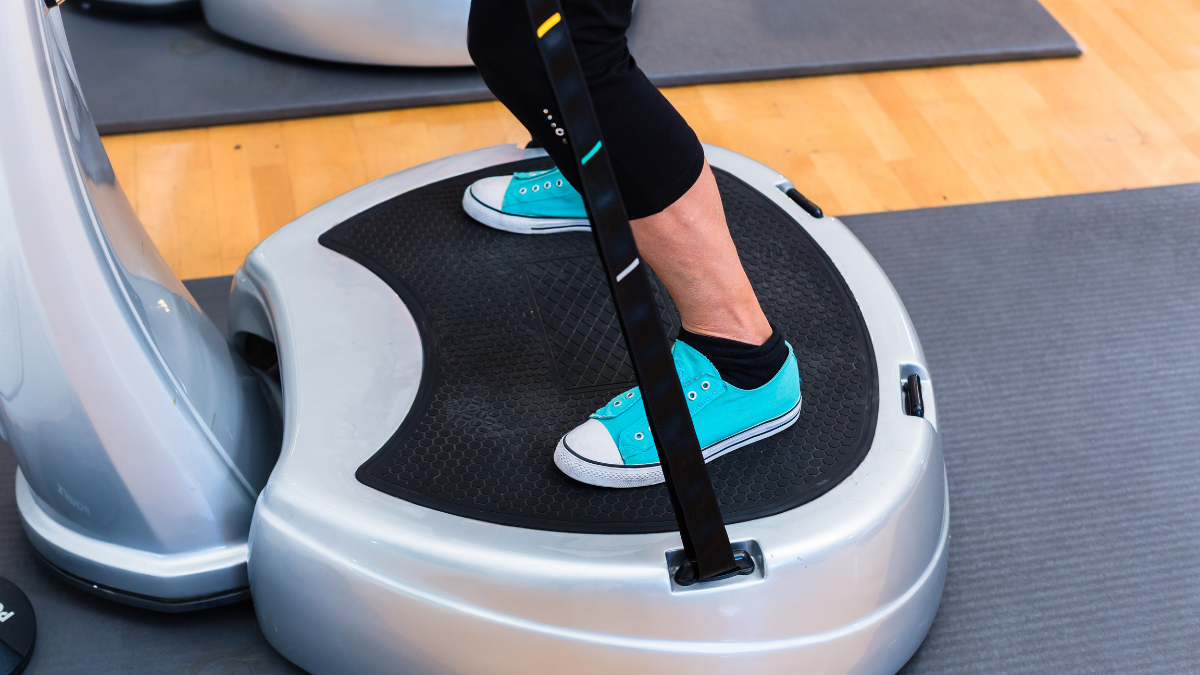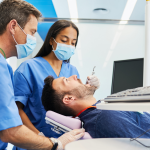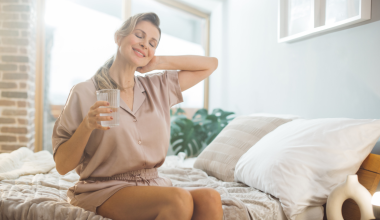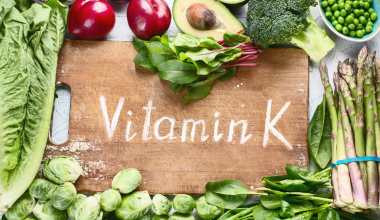Summary
Vibration plates offer a gentle, effective way to support bone density, balance, muscle strength, and circulation—ideal for older adults and people with osteopenia or osteoporosis. Frequency matters: different settings target recovery, balance, or strength. Used properly, they complement traditional workouts or rehab—and new wearable options are now emerging.
When you buy through our links, we may earn a commission. Learn More.
NASA had a problem. Astronauts were losing bone mass and muscle strength during long stays in space. Without gravity, their bodies weren’t getting the usual pressure and movement needed to stay strong. But pills or intense workouts weren’t the answer.
So NASA turned to scientists for help. One of them, Professor Clinton Rubin, led a special research project called ‘A Low Intensity Mechanical Countermeasure to Prohibit Osteoporosis in Astronauts During Long-Term Spaceflight”, the goal of which was to find a safe, drug-free solution to the problem. The answer? A vibration platform—a machine astronauts could stand on that gently vibrated.
These small vibrations send signals through the body, causing your muscles to contract and relax many times per second, without you even thinking about it. The tiny movements can:
- Help build muscle
- Improve balance
- Boost circulation
- Support bone health
- Speed up recovery after workouts
It may feel like you’re not doing much, but your body is working harder than you think.
Who Should Use Vibration Plate Machines
Vibration Plate machines are used for a variety of reasons. Your need will dictate the hertz frequency range, length of time and workout timetable for maximum efficacy.
See below for a guide explaining which frequency to use for which purpose. Check with your healthcare provider before pursuing vibration plate therapy to confirm.
People with limited mobility:
Vibration plates offer a low-impact way to stimulate muscles and improve circulation, making them a good option for individuals who have difficulty with traditional exercise.
Those seeking a low-impact workout:
Vibration plates can be a gentle way to engage muscles and improve fitness without putting excessive strain on joints or the body.
Individuals looking to supplement their exercise routine:
Vibration plates can be incorporated into a fitness regimen to add variety and challenge, potentially enhancing results from other forms of exercise.
People interested in improved circulation:
Some studies suggest vibration plates may help improve blood flow, which can be beneficial for individuals with peripheral artery disease or those who are deconditioned.
Those looking to improve balance and coordination:
The unstable platform of a vibration plate can challenge balance and proprioception, potentially leading to improved stability and coordination.
Individuals with specific conditions:
Some individuals with conditions like lipedema or lymphedema may find vibration plates helpful for reducing swelling and pain, but should consult with their doctor first.
People with Osteopenia or Osteoporosis
Vibration plates can be a beneficial tool for individuals with osteoporosis, but it’s crucial to use them under the guidance of a healthcare professional and with proper precautions. Low-intensity vibration therapy has shown promise in improving bone density and reducing fracture risk when combined with other treatments and lifestyle changes. Is also helps increase balance thereby reducing falls, which is critical for people with osteoporosis.
Watch Dr. Doug Lucas discuss how a whole-body vibration plate can improve bone health.
Vibration Plate Frequency Guide – How to Use Your Machine
Depending on your desired outcome, if you’re just standing on the machine while scrolling your phone, you’re not going to see much benefit.
To make it effective, your form and position matter a lot. Contrary to some early advice, you should not lock your knees. Instead, keep them slightly bent to protect your joints and allow your muscles to absorb the vibration.
You can also do basic exercises like:
- Squats
- Lunges
- Planks
- Push-ups
- Calf raises
Start with 10–15 minutes, 2 to 3 times per week, and build from there. The key is consistency and proper body positioning. That said, results vary based on how you use it. A well-programmed 10-minute session can activate muscles, but it won’t replace a full-body strength workout.
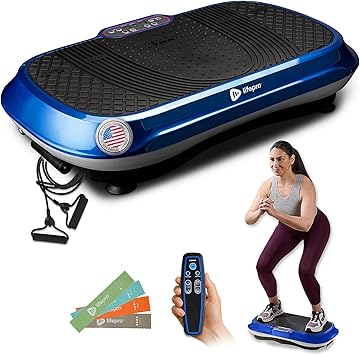
LifePro Waver Vibration Plate Exercise Machine with Bluetooth Remote & 9 Vibration Programs. Includes a user-friendly manual, live support and instant access to free professional online workout videos.
Who Should Avoid Vibration Plate Therapy?
While safe for most people, vibration plates are not for everyone. You should talk to your doctor before proceeding if you have:
- A pacemaker
- Blood clots or deep vein thrombosis (DVT)
- Joint replacements or recent surgeries
- Advanced diabetes or neuropathy
- Are pregnant or planning to become pregnant
And of course, if you feel dizzy, lightheaded, or uncomfortable while using it—step off immediately.
Vibration Therapy Innovations
Finally, there’s a new innovation shaking up the world of bone health. The Osteoboost belt is the first FDA-cleared, drug-free, prescription vibration therapy designed specifically for women with osteopenia after menopause. Unlike traditional vibration plates, this lightweight belt delivers gentle, targeted vibrations directly to the hips and lower spine—areas most vulnerable to bone loss.
Worn for just 10 minutes a day while standing still, the device is easy to use and designed to fit into everyday routines. While it’s currently only available by prescription in the U.S., the company is working to make it available in Canada.
Final Thoughts: Worth the Hype?
The evidence for effectiveness is mixed; like many new technologies, there’s limited evidence to support it. Mayo Clinic says “But comprehensive research about whole-body vibration is lacking. It’s not yet clear if whole-body vibration provides the same range of health benefits as exercise you are able to actively engage in, such as walking, biking or swimming.” Web MD says “Further, research has found that some of the devices give off vibrations that are far stronger than what’s considered safe.” Talk to your doctor before you try one, especially if you have any health conditions.
Done right, they can support your fitness, mobility, and bone health—even if you’re nowhere near outer space.
~ Read more from The Health Insider ~
- Health Canada Authorizes TNKase for Treatment of Adult StrokeHealth Canada officially authorizes TNKase for treating acute ischemic stroke in adults. This pivotal approval introduces a faster, 5-second injection to emergency rooms nationwide.
- Generic Ozempic: Canada to See Significant Price DropsStruggling with high medication costs? Generic Ozempic is coming to Canada in 2026. Learn how prices could drop from $400 to around $100.
- Affordable Dental Care is Here. This is where to find it.Don’t let cost stop you! THI breaks down the Canadian Dental Care Plan (CDCP) and shows you where to find discounted, supervised care near you.
- Wegovy Authorized as Canada’s First Liver Disease DrugNo more “watchful waiting.” Health Canada’s approval of Wegovy gives MASH patients their first tangible medical option to fight liver fibrosis.
- The Affordable Superfood Canadians OverlookPacked with protein, fibre and key nutrients, beans are a budget-friendly way to boost health and support local farmers.
- Canada Authorizes First-Ever Oral Treatment for Postpartum DepressionCanada approves ZURZUVAE, the first oral PPD pill. This breakthrough 14-day oral therapy aims to elevate the standard of maternal mental health care.
The information provided on TheHealthInsider.ca is for educational purposes only and does not substitute for professional medical advice. TheHealthInsider.ca advises consulting a medical professional or healthcare provider when seeking medical advice, diagnoses, or treatment. To read about our editorial review process click here.

